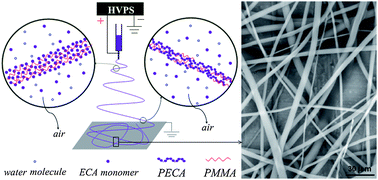Solventless electrospinning of ultrathin polycyanoacrylate fibers
Abstract

* Corresponding authors
a
College of Physics, Qingdao University, Qingdao 266071, China
E-mail:
yunze.long@163.com
b Key Laboratory of Photonics Materials & Technology in Universities of Shandong (Qingdao University), Qingdao 266071, China
c State Key Laboratory Cultivation Base of New Fiber Materials & Modern Textile, Qingdao University, Qingdao 266071, China
d College of Chemistry, Chemical Engineering & Environment, Qingdao University, Qingdao 266071, China
e National Laboratory for Marine Corrosion & Protection, Luoyang Ship Material Research Institute, Qingdao 266101, China

 Please wait while we load your content...
Something went wrong. Try again?
Please wait while we load your content...
Something went wrong. Try again?
S. Liu, Y. Long, Y. Huang, H. Zhang, H. He, B. Sun, Y. Sui and L. Xia, Polym. Chem., 2013, 4, 5696 DOI: 10.1039/C3PY00718A
To request permission to reproduce material from this article, please go to the Copyright Clearance Center request page.
If you are an author contributing to an RSC publication, you do not need to request permission provided correct acknowledgement is given.
If you are the author of this article, you do not need to request permission to reproduce figures and diagrams provided correct acknowledgement is given. If you want to reproduce the whole article in a third-party publication (excluding your thesis/dissertation for which permission is not required) please go to the Copyright Clearance Center request page.
Read more about how to correctly acknowledge RSC content.
 Fetching data from CrossRef.
Fetching data from CrossRef.
This may take some time to load.
Loading related content
